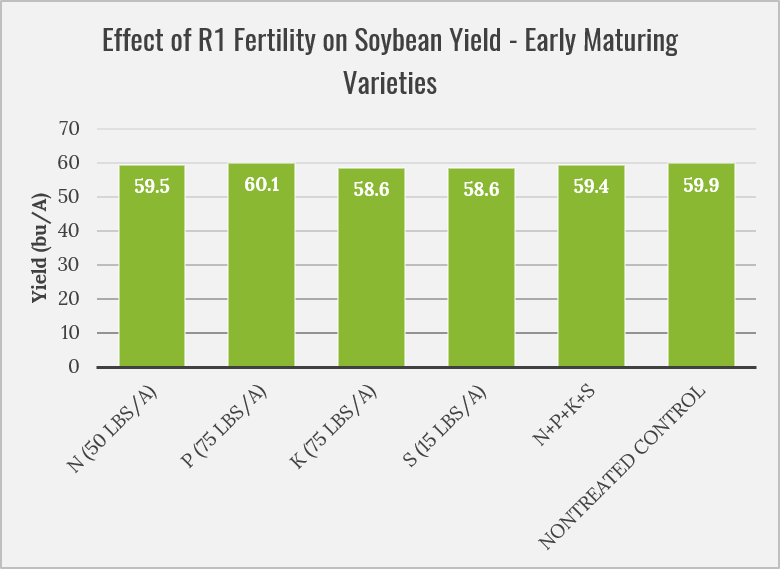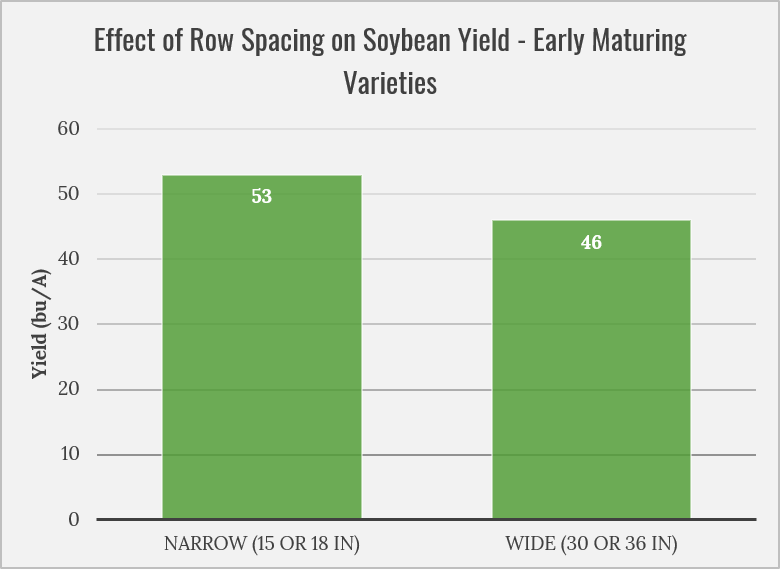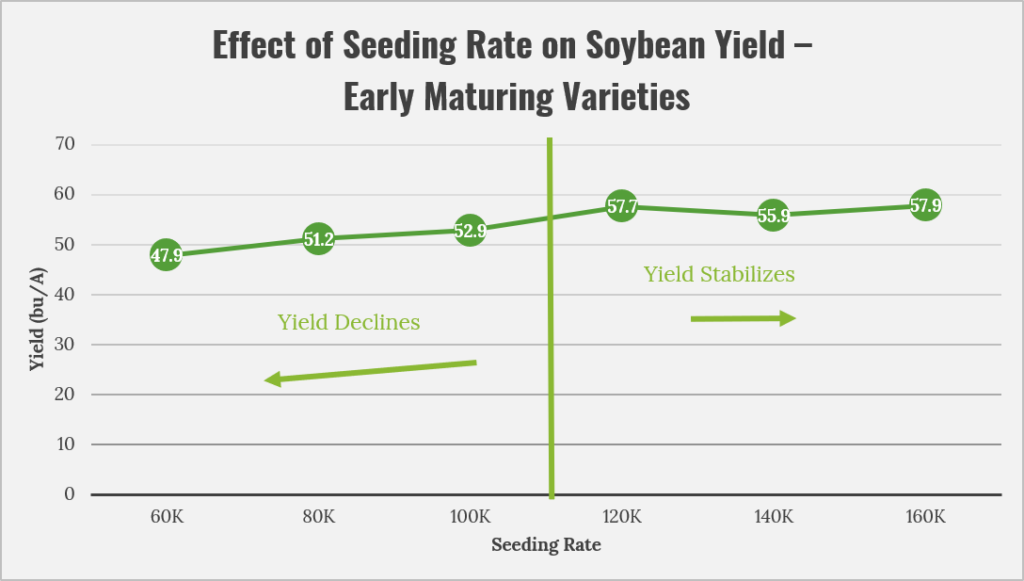Growers across North Carolina are becoming increasingly interested in producing earlier maturing soybean varieties (III and IV). These soybean maturity groups typically have an indeterminate growth habit, which allows simultaneous vegetative and reproductive growth over several weeks which is different than the determinate growth habit of most of the soybeans we produce in North Carolina (≥MG5), which stop vegetative growth when they start flowering.
Some growers across the state are very successfully producing early maturing soybeans but there has been limited research conducted on the best management practices for managing these varieties. In collaboration with County Extension Agents and NCSU extension, the NCSPA funded a project to investigate agronomic best practices for managing these indeterminate varieties. Preliminary results are discussed below, but this work will continue for several years.
The trials included the evaluation of row spacing, seeding rate, planting dates, and fertility for both a group III and IV variety.
Row Spacing
Narrow rows (15 or 18 in) were compared to wide rows (30 or 36 in). In a combined analysis across locations and varieties, the narrow row spacing provided a 7 bu/A yield advantage over the wider row spacing. These results are aligned with what Dr. Dunphy has found with determinate varieties over the years, that you will sometimes see a yield advantage from narrow row spacing, especially in high yield environments.
Seeding Rate
Six different seeding rates were evaluated ranging from 60,000 to 160,000 seeds/A. Combining data across locations, soybean yield declined at the lowest seeding rates (60,000 and 80,000) and stabilized at rates greater than 100,000 seeds/A. Yield declines at lower seeding rates were generally more pronounced in high yielding environments. This is also consistent to what we’ve seen in the work Dr. Dunphy had carried out with determinate varieties.
R1 Fertility
There has traditionally been less emphasis in North Carolina on fertilizing soybeans than other crops in the rotation, but soybeans have very high nutrient requirements to maximize yields; 245 lbs N/acre, 43 lbs/P, and 170 lbs K are required to produce a 60 bu/acre soybean crop. Soybean nutrient requirement explodes at R1 (beginning flowering) for several nutrients, therefore it was soil-applied fertility applications at R1 were evaluated. In a combined analysis across research locations and varieties, R1 fertility treatment did not affect soybean yield. As we strive to raise soybean yields across the state, soybean fertility should be a topic of great focus. However, this research indicates that focusing on soil-applied R1 fertility applications will not be the ticket to increasing soybean yields across the state.

A challenge with producing early maturity soybeans in North Carolina is the requirement of timely harvest to prevent seed quality declines. These varieties are coming into physiological maturity when it is hot, humid, and wet; this can intensify issues such as purple seed stain.

In addition to the agronomic practices above, it is important to keep in mind other events happing in your operation at the time these early maturing soybeans would need to be harvested before deciding to try these varieties.
This work will be continued in 2019 so stay tuned for more information next year.









